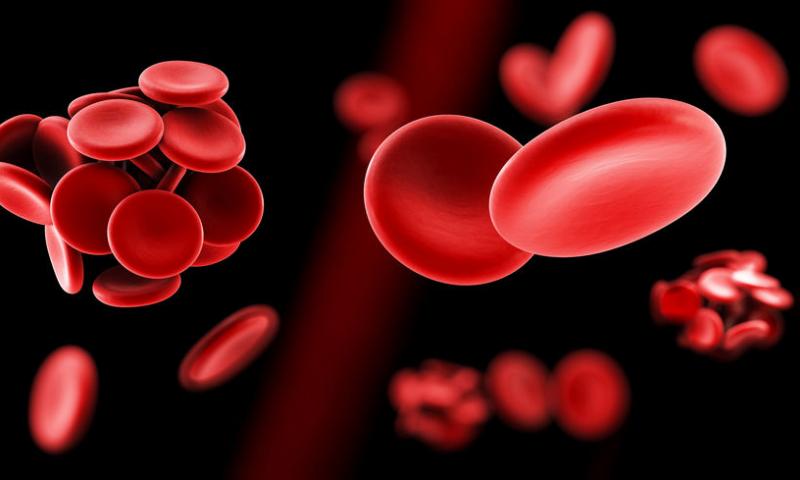 />
/>
Blood clots.
This word has probably been heard by many people with venous diseases. Moreover, doctors often describe blood clots as one of the health threats.
They are absolutely right.
Blood clots interfere with blood circulation and sometimes endanger life.
But how do such harmful formations appear in our body? Has the body turned against us?
Not really.
Blood clots can indeed be very dangerous, but not always. Initially, they serve to protect blood vessels - prevent blood loss in case of wounds and injuries, stop germs from getting into a wound and allow the wound to heal faster.
The body reacts to damage: a gel-like or semi-solid-state blood clots form next to them. These clots close the wound. Then the damage is overgrown, and the protection from the blood cells gradually dissolves.
This is how things should develop in an ideal world.
Unfortunately, sometimes blood clots remain in the vessels for too long and interfere with blood circulation.
The defense mechanism of our body also makes some other mistakes. Often, a blood clot in a leg or other part of the body appears even for no reason. It ceases to protect the vessels and turns into a serious threat that can lead to death.
Blood clots form not only in the veins but also in the arteries. Arterial blood clots cause severe pain or paralysis of a part of the body. Sometimes both. The signs of a blood clot are immediate and the patient needs immediate treatment. Otherwise, it can lead to a heart attack or stroke.
Venous blood clots are also dangerous, although they do not attack vital organs instantly. They grow slowly, but with timely treatment they do not cause fatal complications.
The most severe form of venous blood clots is deep vein thrombosis.
According to research, one in four people dies of thrombosis. That is, this killer has more victims than car accidents, breast cancer or AIDS.
Only 50% of patients show signs of deep vein thrombosis:
• Pain
• Edema
• Increased sensitivity
• Skin redness
Pulmonary embolism symptoms:
• Labored breathing
• Chest pain, especially severe with deep breaths and coughing
• Cardiopalmus
• Dizziness and fainting
• Coughing up blood.
Remember the symptoms of thrombosis and its complications - this will help you consult a doctor in time for a full diagnosis!
Why does deep vein thrombosis occur?
Blood clots in blood vessels are formed for three main reasons:
1. Damage to the venous walls
2. Violation of blood circulation
3. Hypercoagulation - increased blood clotting
These problems arise from a variety of risk factors. They do not guarantee the occurrence of deep vein thrombosis, but they significantly increase the likelihood of the disease.
The most common risk factors include:
• Long immobility
• Recent surgery
• Injuries of the lower body parts
• Obesity
• Pregnancy and the postpartum period
• Heart attack or heart failure
• Estrogen therapy or birth control drugs
• Cancer
• Rare genetic disorders
• Age over 60 years
• Vein pathology
• Thrombosis of superficial veins
• History of thrombosis.
Some forms of conventional treatments include:
1. Drug Therapy
Injections of blood-thinning drugs – anticoagulants. Treatment with anticoagulants is used to prevent blood clot growth and prevent recurrence of venous thrombosis.
2. Implantation of the Cava Filter
In some cases, especially if there are contraindications to blood-thinning drugs or their ineffectiveness, the cava filter device can be installed in the main vein of the patient's body (inferior cavity) to prevent the migration of detached fragments of blood clots from the veins of the lower extremities into the vessels of the lungs.
4. Surgical Treatment
Thrombectomy, venous angioplasty and venous bypass grafting.
5. Thrombolysis
Dissolution of thrombotic masses using special drugs - thrombolytics. This procedure can only be performed in the early stages of the disease and has a number of special contraindications.
There are also some Alternative Remedies for preventing the formation of Blood Clots:
- Change Your Diet
The diet of individuals at risk of blood clots should include a variety of foods: cereals, fresh fruits, berries and vegetables, lean meats, dairy products and vegetable oils. Eating foods high in Omega-3 is important. These dietary changes can help reduce triglyceride levels and blood viscosity. Foods rich in flavonoids also help reduce the risk of blood clots. The leader is red grapes. The menu should include more foods high in vitamin E. The range of food items indicated for the preparation of a diet for the prevention of thrombosis is extremely wide.
- Stay Active and Avoid Long Immobility
Even with bed rest after surgery, try to move as much as possible.
- Use Contraceptive Estrogen Pills As Little As Possible
The less hormones affect blood vessels, the less the risk of blood clots in superficial or deep veins.
- Quit Bad Habits
Fighting smoking and drinking alcohol improves blood quality and prevents the development of vascular diseases.
- Wear Compression Hosiery (knee-highs, stockings, tights)
Refuse to wear clothes that squeeze various parts of the body (belts, tight elastic bands on underwear, tight-fitting clothes, corsets, tight shoes).
- Avoid Hypothermia, Injury, Fracture, Severe Shock
Final thoughts:
Vascular thrombosis affects about 70% of the world's population. That is why knowing the reasons for its development and taking preventive measures are so important for each of us.
